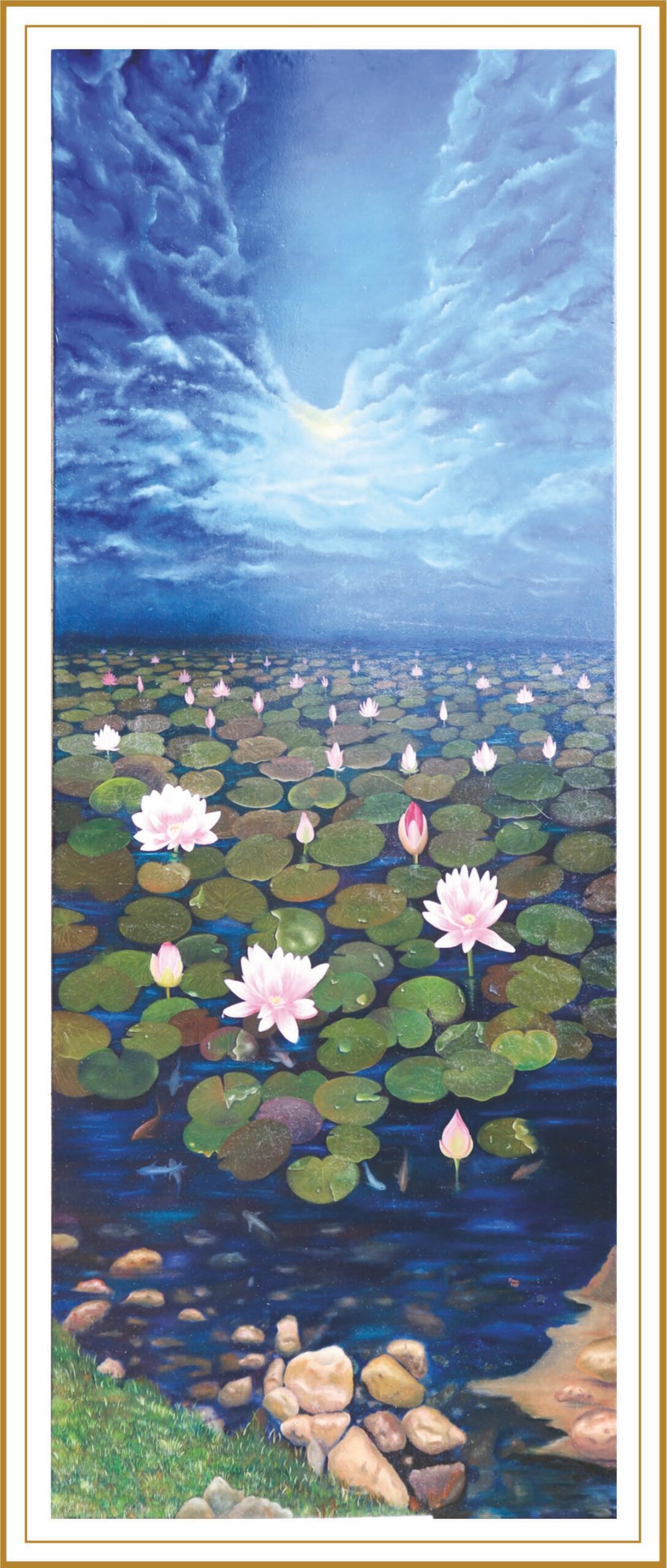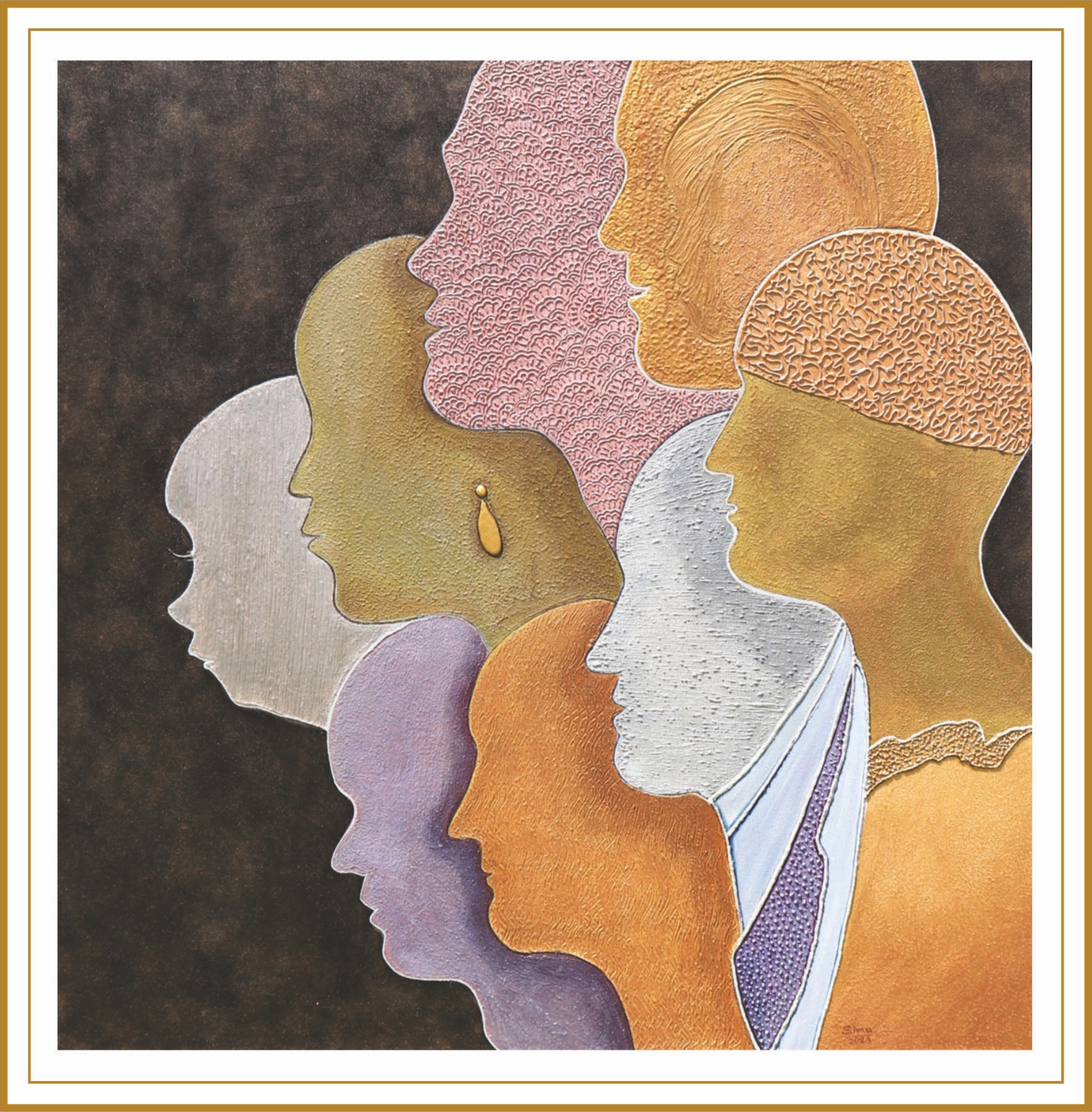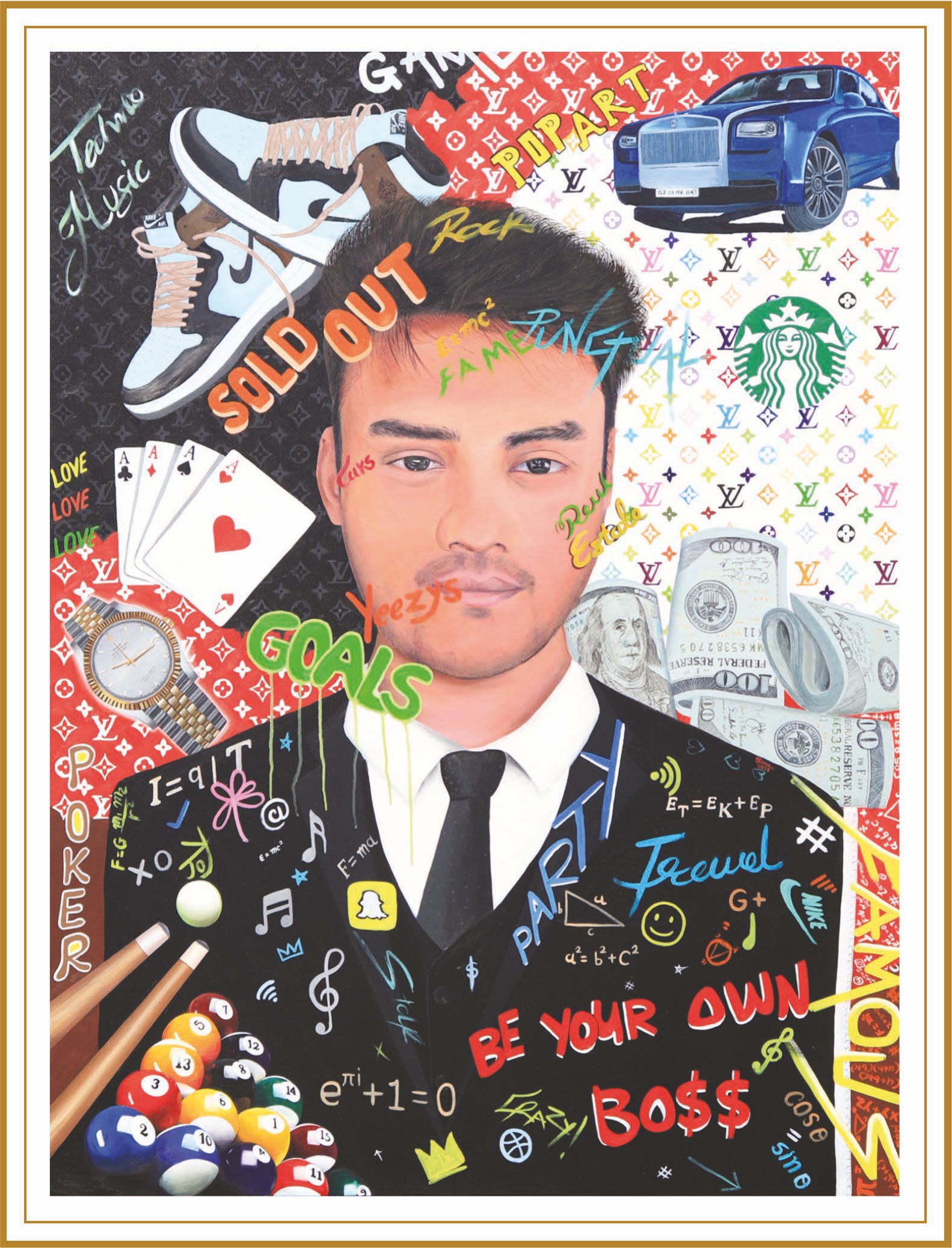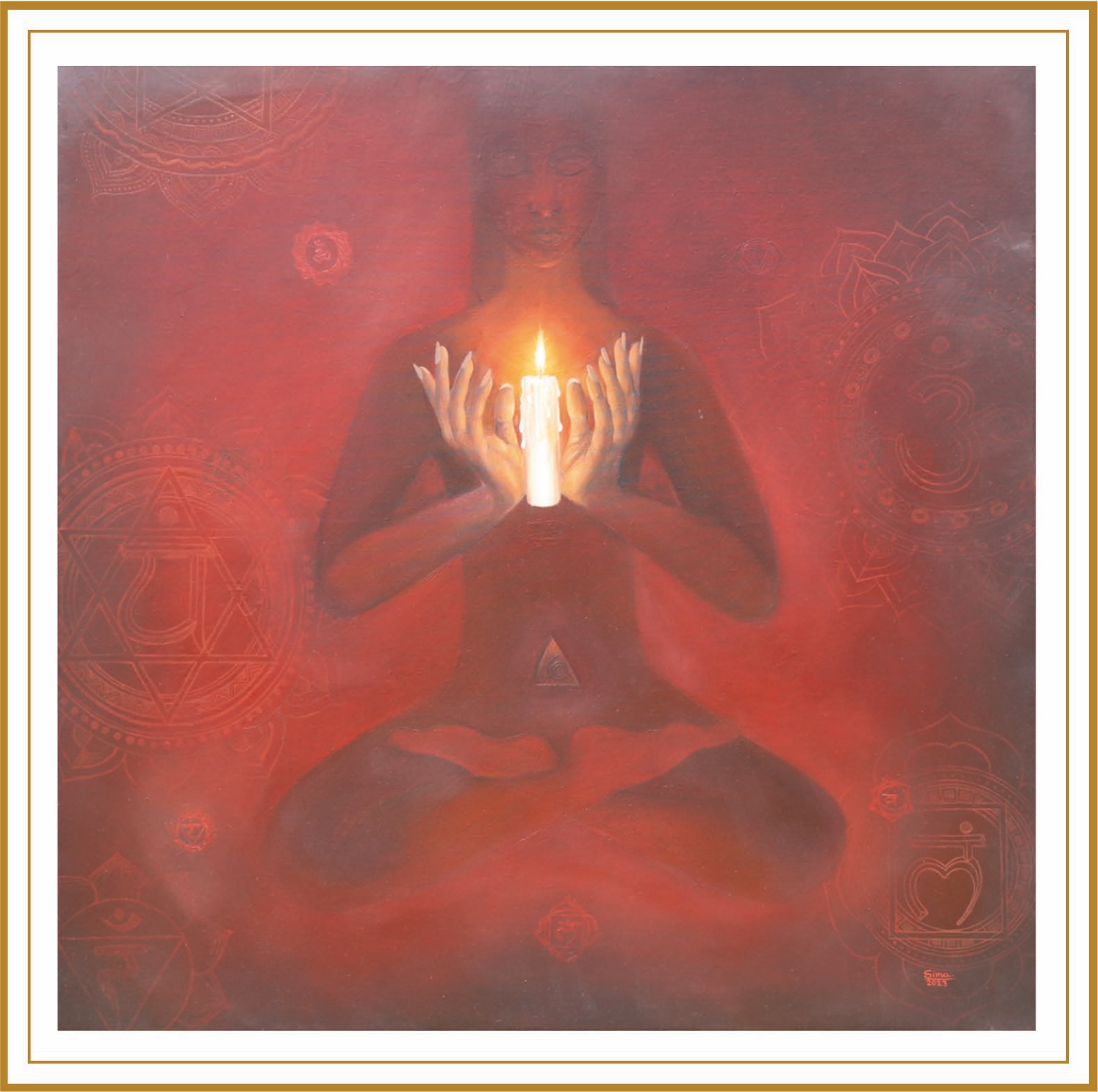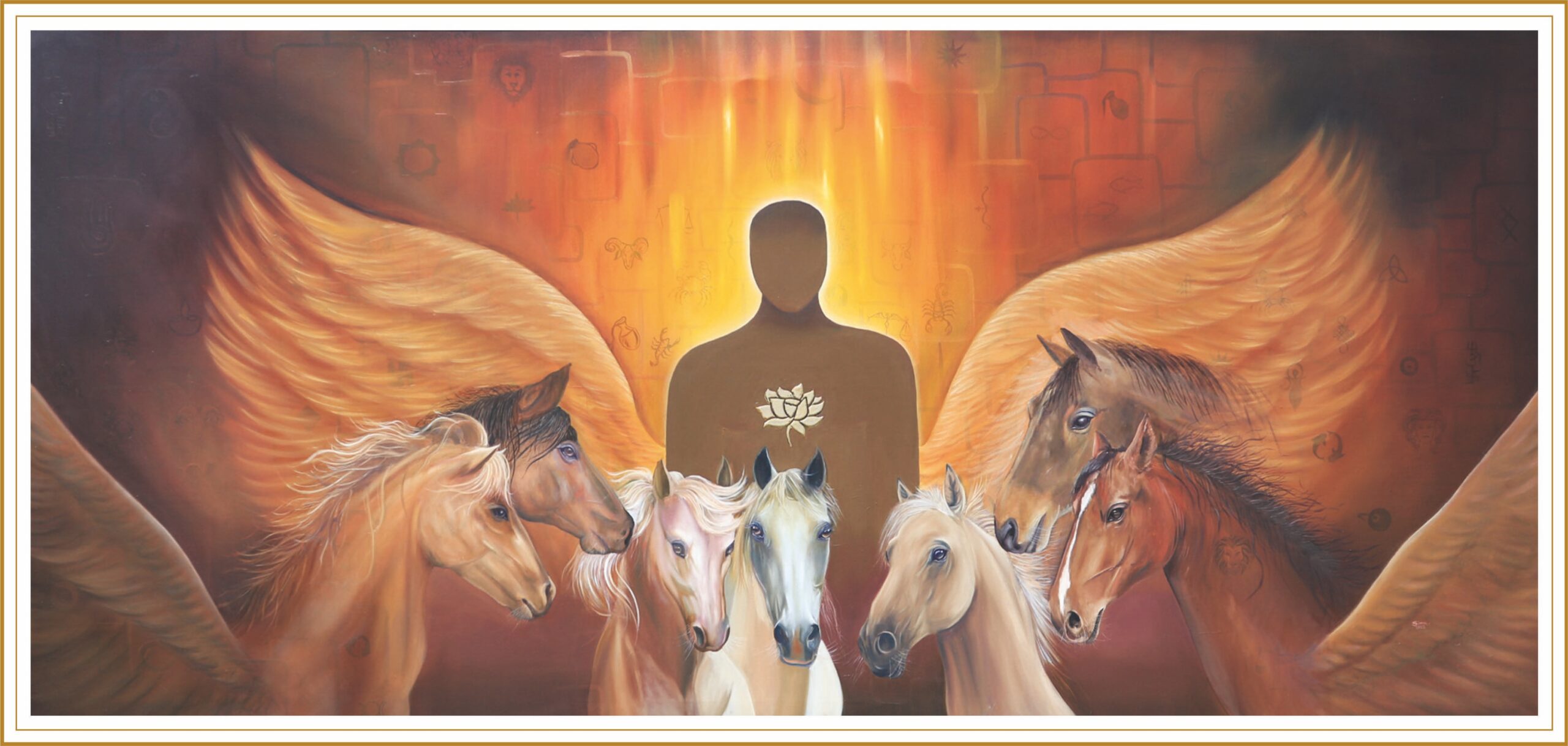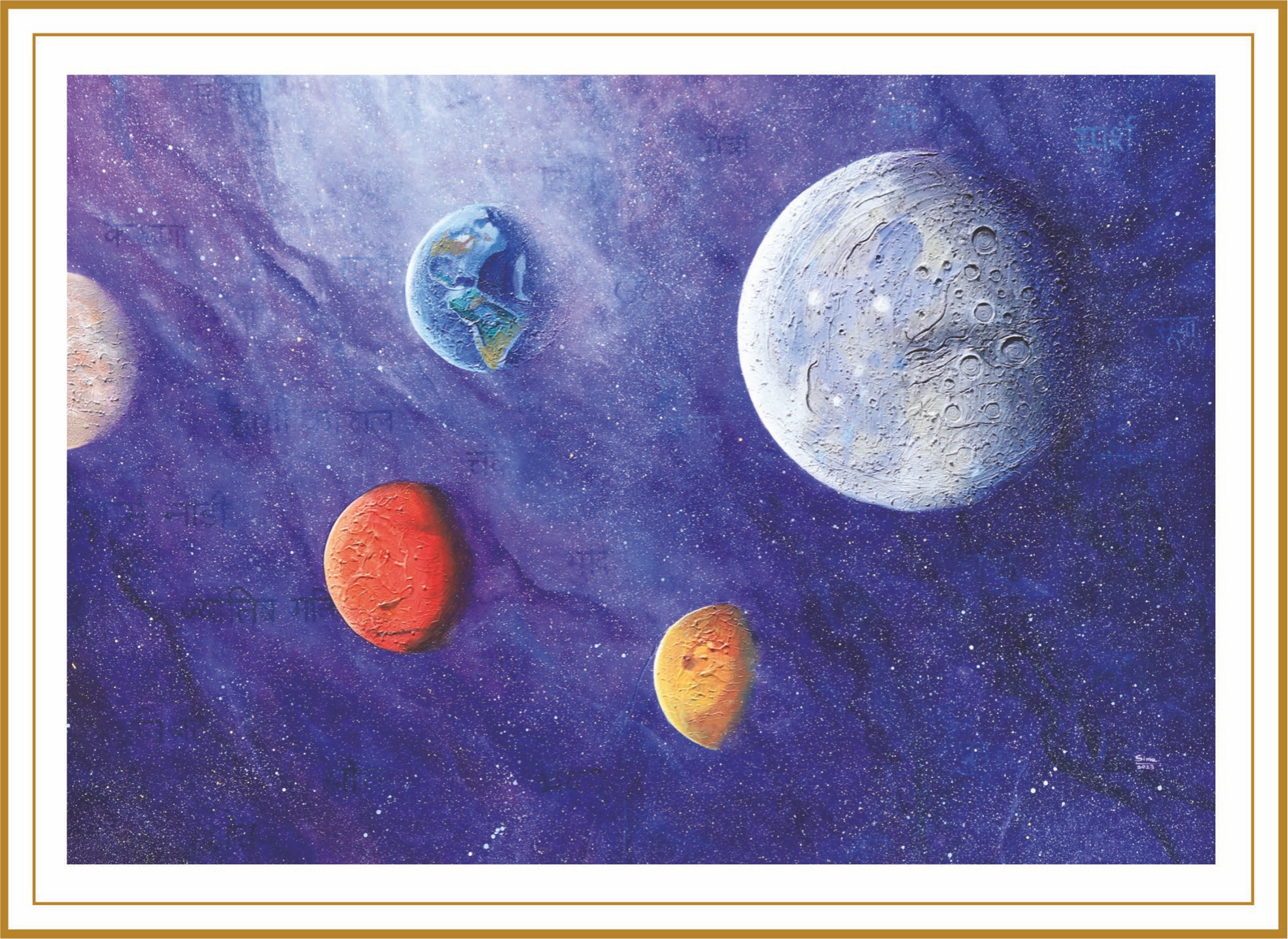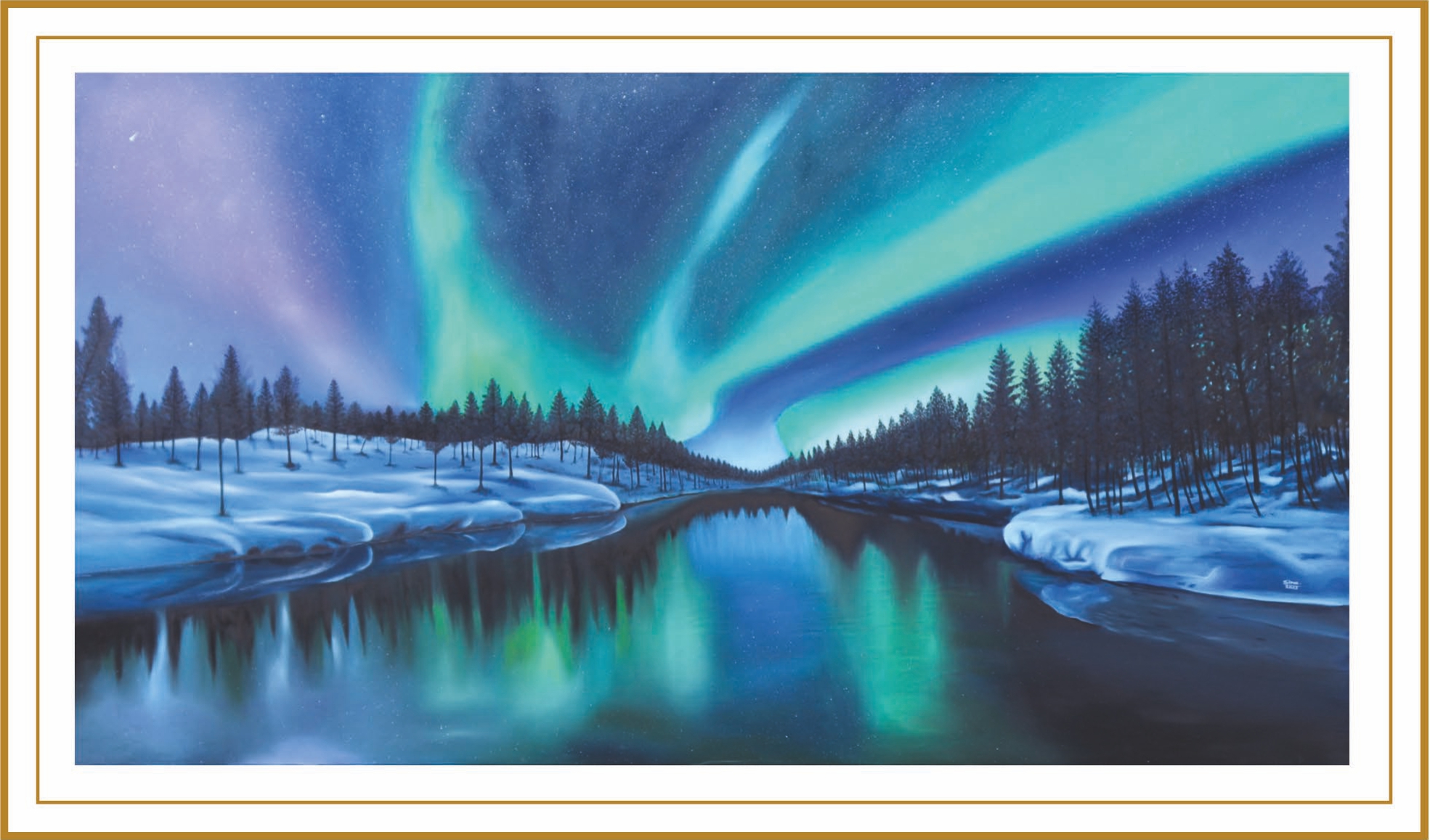Anantman
MANTATVAM
At the heart of “Mantatvam” lies the fusion of two powerful words: “Man,” representing the heart in Gujarati, and “Tatvam,” signifying elements in Sanskrit. This amalgamation symbolises the intrinsic connection between our hearts and the elemental forces that shape our existence. Just as the painting portrays the harmony of earth, oir, water, solar energy, and sky, so too does our heart, crafted from these very elements. Through “Mantatvom,” we’re invited to embrace the inherent beauty and balance within both our innermost selves and the natural world that surrounds us.
EKVIDHA
“Ekvidha” radiates the essence of unity amidst diversity, mirroring the fomilial tapestry where each thread, unique in colour and texture, weaves together seamlessly. Derived from the Gujarati word “Ek,” meaning ‘one’ or ‘united, and the Sanskrit “Vida,” for ‘diverse’ or ‘varied, the name encapsulates the painting’s theme of togetherness amidst individuality. Just as each family member’s distinct shoes find harmony on the shared rack, so too do their diverse personalities and perspectives blend effortlessly within the home. Through “Ekvidha, we’re reminded of the beauty inherent in embracing our differences, weaving a rich tapestry of love and unity within the cherished bonds of family.
MANRANJAN
“Manranjan, an enchanting amalgamation of “Man” (heart) and “Ranjan” (delight), eloquently encapsulates the painting’s essence. It conjures images of joyous reverie and inner fulfillment, mirroring Param’s eclectic passions and vibrant spirit. Each stroke of color and meticulously crafted detail in the artwork speaks to his heart’s desires, from his love for luxury cars to his fascination with fashion and games. This name transcends mere representation, evoking a sense of profound connection between Param’s innermost desires and the radiant tapestry of the painting. “Manranjan stands as a testament to the boundless joy found in embracing one’s true passions and pleasures.
DIPTANJALI
In Sanskrit, “Diptanjali” embodies deep respect and a radiant tribute to inner balance. The name reflects the gentle glow of a candle’s flame, guiding the way to chakra harmony through Reiki and candlelight meditation. “Dipta” means light, while “Anjali signifies a lady’s open hands, offering intention and dedication to balance. Together, “Diptanjali” beautifully honours the painting’s profound symbolism a glowing offering to the union of body, mind, and spirit.
EKDHAMRUT
“Ekdhamrut,” the focal point of the living room, perfectly encapsulates the essence of “Ghar Sabha. The name is a blend of three Sanskrit words: “Ek” meaning unity, “Dham” referring to principles or way of life, and “Ruf” symbolising cycles or journeys. This painting features seven winged horses, each representing individual family members unique journeys, yet moving together in harmony. At its centre, a human figure with a golden lotus heart signifies the soul’s growth through life’s challenges. The intricate zodiac signs and Vastu symbols reflect the spiritual and cosmic principles guiding and protecting the family, making “Ekdhamrut” a profound representation of unity and life’s cyclical nature.
BRAHMAATMAN
“Brahmaatman is a harmonious blend of “Brahma,” representing the universe, and “Atman,” meaning soul. This name beautifully encapsulates the painting’s essence, symbolising the soul’s cosmic journey through countless universes to find its true family. The intricate visual elements of the painting, adorned with spiritual motifs and celestial landscapes, reflect this profound voyage. Each brushstroke narrates a story of destiny, connection, and the soul’s ultimate quest for belonging. “Brahmaatman” is not just a title; it’s an invitation to explore the universe within and beyond.
KALPADRANG
“Kalpadrang,” a mesmerising portrayal of the Aurora Borealis, graces Param’s bedroom, embodying his dream to witness this celestial bollet. The painting captures the ethereal dance of colours, reminiscent of the mythical Kalpavriksha, the wish-fulfilling tree from Hindu mythology. Each stroke radiates vibrant hues, akin to the tree’s promise of endless wonders. This artwork is a symphony of light and colour, infusing serenity and enchantment into the room. “Kalpadrang stands as a beacon of aspiration, where dreams and reality entwine in a magical display.
CHAKRAYU
“Chakrayu,” blending Sanskrit “Chakra” (sacred wheels of life) and Gujarati “Ayu” (essence of vitality), captures life’s cyclical essence. Inspired by the intricate mandala, it honors the eternal dance of creation with cosmic whirlpools of energy. Radiant hues and dynamic patterns invite viewers on a spiritual journey of self-discovery. “Chakrayu” celebrates the interconnectedness of all beings and the rhythms of existence, embodying ancient wisdom and boundless creativity.
JIVANARTH
In “Jivanarth,” the essence of existence unfolds through the journey depicted on canvas. The solitary figure, poised in determination, strides towards a luminous aperture, symbolising enlightenment and transcendence. As he steps: closer, the circle of radiance expands infinitely, echoing the boundless potential inherent in every soul’s quest for purpose. The name encapsulates this profound exploration of life’s meaning, inviting viewers to reflect upon their own odyssey towards enlightenment amidst the vast expanse of existence.
ANTARNAATH
“Antarnath” whispers of a spiritual journey, where the inner realm meets the divine presence. With “Antar” representing the depths of our being and “Nath” symbolising the divine guardian, the name encapsulates the quest for inner peace and spiritual fulfilment depicted in the painting. Just as the temple stands as a beacon of purity and sanctity, so too does “Antarnath” serve as a reminder of our yearning for connection to the sacred within ourselves. Through its serene depiction of clouds and temple spires, the painting invites us to seek solace in the divine, finding harmony amidst life’s celestial expanse.

